Green
Green
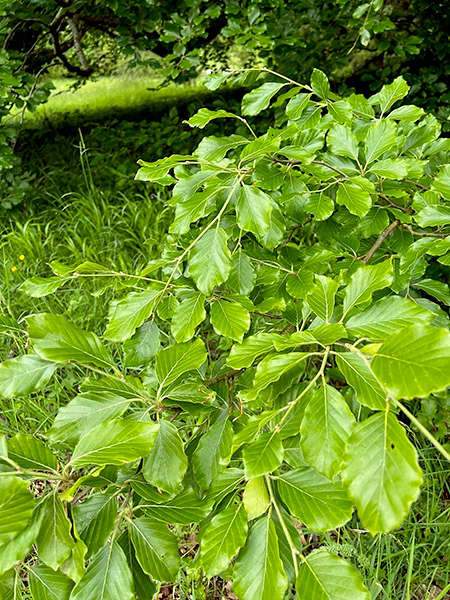 Walking away from the castle down the gravel path towards the cedar airman, every step takes me further into a medley of deep intense or light bright shades of green. The short-mown path has a greater clarity as the grasses and wildness by comparison are so tall either side and the trees above are unfurling their leaves at a great rate although each to their own in terms of speed. Some are slim, delicate leaves like the ash, others are rounder, clustered along their branches such as the beech, the silvery sorbus or the rustling lightness of the birch.
Walking away from the castle down the gravel path towards the cedar airman, every step takes me further into a medley of deep intense or light bright shades of green. The short-mown path has a greater clarity as the grasses and wildness by comparison are so tall either side and the trees above are unfurling their leaves at a great rate although each to their own in terms of speed. Some are slim, delicate leaves like the ash, others are rounder, clustered along their branches such as the beech, the silvery sorbus or the rustling lightness of the birch.
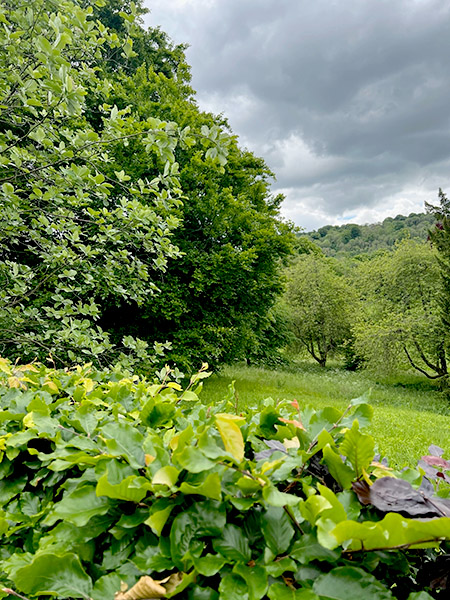 Pausing to look either right, left or further ahead into the distance, everything seems luxuriant, peaceful and calming to the mind. The views offer dense splodges of green, enthusiastically clothing the slopes of Siddown Hill and obscuring the shapes of the clearings with their luxuriant denseness. The shades and textures seem infinite and harmonious, their architecture very different from the harder and often-disrupting shapes introduced by humans.
Every day I enjoy the same walk and every day it is different even though the plants and trees themselves cannot move. Over the millennia trees have had to adapt to a changing landscape but the biggest risk to them is from human expansion.
Pausing to look either right, left or further ahead into the distance, everything seems luxuriant, peaceful and calming to the mind. The views offer dense splodges of green, enthusiastically clothing the slopes of Siddown Hill and obscuring the shapes of the clearings with their luxuriant denseness. The shades and textures seem infinite and harmonious, their architecture very different from the harder and often-disrupting shapes introduced by humans.
Every day I enjoy the same walk and every day it is different even though the plants and trees themselves cannot move. Over the millennia trees have had to adapt to a changing landscape but the biggest risk to them is from human expansion. 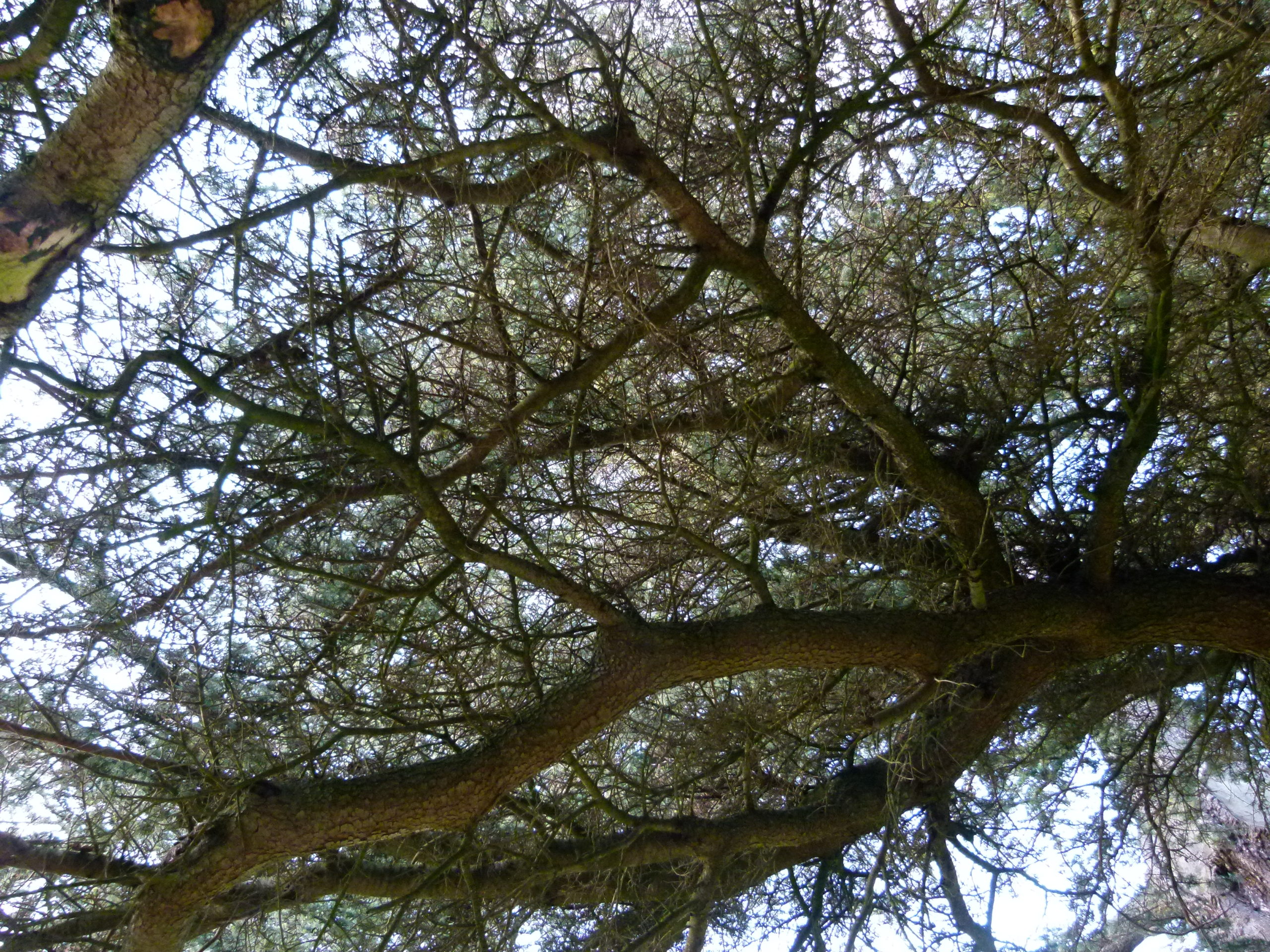 Planet earth has lost one third of its trees in the last 10,000 years but over half of that figure has been since 1900 and the relentless rise of global industrialisation. It is not just the issue of deforestation either but the increasing stresses of heat and drought bought on by climate change.
Planet earth has lost one third of its trees in the last 10,000 years but over half of that figure has been since 1900 and the relentless rise of global industrialisation. It is not just the issue of deforestation either but the increasing stresses of heat and drought bought on by climate change.
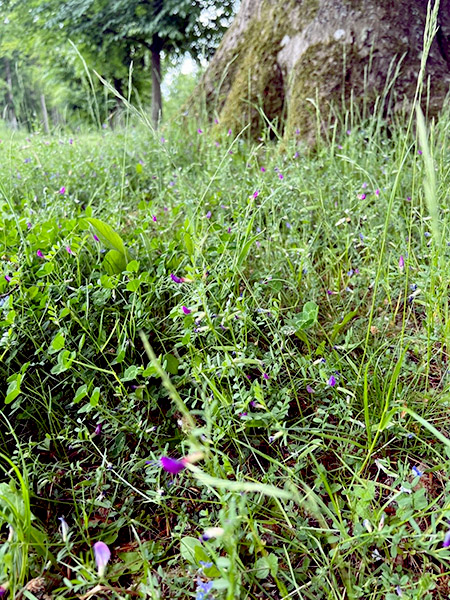 We know that we need trees to breathe and to live on this world and they are also responsible for a world of diversity in themselves, not just in their overhead canopies but through their roots as well. The mycorrhizal fungi in their root systems span huge areas connecting trees and plants through a hidden underground network. For example, a sapling may well rely on nutrients and sugar from older, taller trees which are sent through the mycorrhizal network.
We know that we need trees to breathe and to live on this world and they are also responsible for a world of diversity in themselves, not just in their overhead canopies but through their roots as well. The mycorrhizal fungi in their root systems span huge areas connecting trees and plants through a hidden underground network. For example, a sapling may well rely on nutrients and sugar from older, taller trees which are sent through the mycorrhizal network.
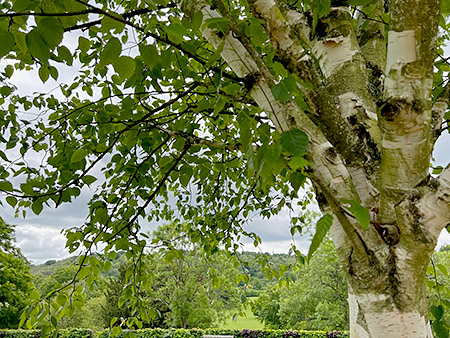 It is not an easy time for trees and they are not something that can be quickly or easily replaced. Tall trees take centuries to grow and it is careless to cut down our old friends unless it is certain that the benefits will outweigh the long-term costs. We need to all start thinking about the journey rather than short term solutions.
One of the buzz phrases of today is in the endless offers we receive to offset the carbon emissions inherent in our purchases through tax or other trading incentives and schemes.
It is not an easy time for trees and they are not something that can be quickly or easily replaced. Tall trees take centuries to grow and it is careless to cut down our old friends unless it is certain that the benefits will outweigh the long-term costs. We need to all start thinking about the journey rather than short term solutions.
One of the buzz phrases of today is in the endless offers we receive to offset the carbon emissions inherent in our purchases through tax or other trading incentives and schemes. 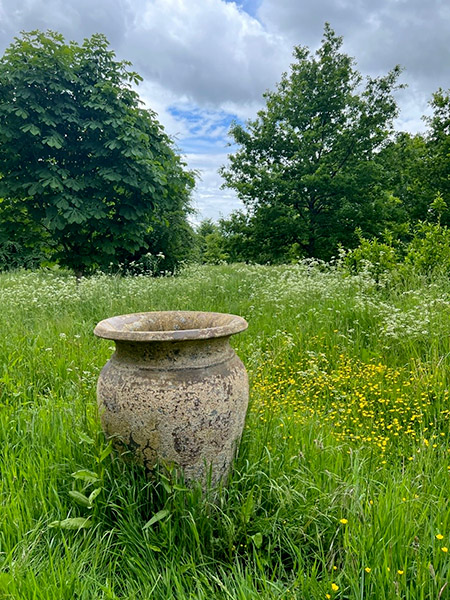 This seems a somewhat meaningless version of paper shuffling as we all know we have to reduce the actual carbon emissions, not just trade virtual offsets. Likewise, the new paperless currencies, the bitcoins, may save on paper and metal but use so much electricity in their “mining” process as to be more harmful to the environment than the originals. Financial papers report that for example bitcoin servers use as much electricity (in the main fossil fuel resources) every day as an entire European country...
This seems a somewhat meaningless version of paper shuffling as we all know we have to reduce the actual carbon emissions, not just trade virtual offsets. Likewise, the new paperless currencies, the bitcoins, may save on paper and metal but use so much electricity in their “mining” process as to be more harmful to the environment than the originals. Financial papers report that for example bitcoin servers use as much electricity (in the main fossil fuel resources) every day as an entire European country...
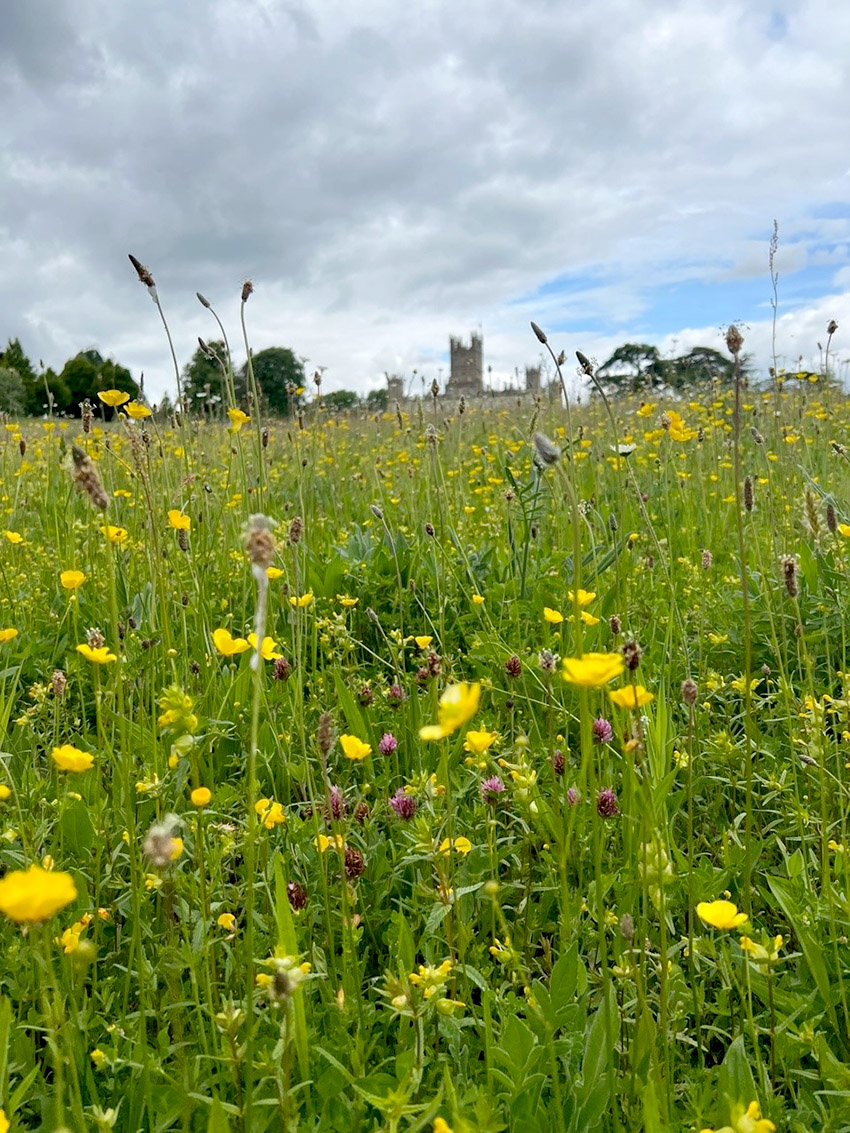 Of course, in one of humanity’s endless contradictions, having become stressed from the life we have lurched into, apparently we then need to “bathe” in trees to restore us. Green is a calming and healing colour, it symbolises the renewal of life, and the new growth is hope for the future.
Humans look for both novelty and reassurance, provoking and inspiring different thoughts to take us forward on ever faster paths. Perhaps we need to simply sit down and work out what we really want and need.
Of course, in one of humanity’s endless contradictions, having become stressed from the life we have lurched into, apparently we then need to “bathe” in trees to restore us. Green is a calming and healing colour, it symbolises the renewal of life, and the new growth is hope for the future.
Humans look for both novelty and reassurance, provoking and inspiring different thoughts to take us forward on ever faster paths. Perhaps we need to simply sit down and work out what we really want and need.
52 Comments
Dear Lady Carnarvon,
Your photos, observations and thoughts are spot on….it feels, at times, that we are spiraling out of touch and control. A reasoned look.at our important values is exactly what we need. But there will be many differing opinions. A focus on core values, and the impact of green, would serve the world well.
It is Memorial Day here in the US, and we pause to honor those who made the ultimate sacrifice. Your Airmen memorial does that everyday. Thank you for the peace, beauty, and wonderful insights you bring to us each week,
Please continue to stay well, and all good luck with your summer activities at the Castle.
Best regards,
Charlotte Merriam Cole
Thank you Charlotte
Good morning from Colorado. As cold weather leaves us I too look forward to Spring and all of the green returning to our world. A lovely rain and new leaves on trees remind me that every day is precious and I am truly grateful.
Beautifully expressed, Lady Carnarvon. Perhaps we just need to slow down period and appreciate the soul nurturing splendor that nature provides to us everyday. How blessed you are to have such a wonderful view!
Monday Greetings Lady Carnarvon,
So absolutely correct about need and use of trees throughout our world and challenge of human created Climate Change. The lack of cool weather and rain throughout our world is sad to read about and see throughout. Also agree with you on Bitcoin as not a fan given same reasons.
Thank you again for another beautiful, informative and educational blog.
Heading out now on my morning walk throughout forested areas up in PA, USA now as it is cooler this morning and will be too hot as the day carries on to walk later.
Remain well.
Enjoy your walk in the sunshine!
Good morning from Fort Worth, Texas. I have four huge oak trees in my front yard that provide shade from the brutal Texas heat, shelter for wildlife, and perfect runways for cavorting baby squirrels, along with numerous bird nests. We endure the yellow pollen every year that piles up in drifts, knowing there’s a price to pay for beauty. Often I ponder on the stories these trees could tell. One of the trees is just outside a large floor to ceiling window and I sit on a comfy chair, drinking in the beauty. It’s calming, at least until it has to be trimmed back from the roof. I created a maze through the ground cover underneath the trees and the grandchildren love it, chasing each other and giggling. Trees are life.
Good Morning everyone at Highclere,
There is NOTHING more beautiful than the shade of green after ALL the SPRING rain. It is a shade of green that NO ONE can duplicate.
Please everyone ENJOY the many marvels of ALL the spring flowers, and remember, that is way we ALL have camera's!
Enjoy your season,
Respectfully Yours,
John Roberts
Tonawanda, N.Y.
U.S.A
Lady Carnarvon lovely of pictures green and did you lord Carnarvon have a nice weekend and you and lord Carnarvon enjoy your long weekend for the queen platuim jubilee lovely to visit highcelere castle
Lady Carnarvon, I never ever get tired of seeing trees no matter what size they are. I love and need trees in my life, the closer the better. They give life to all and we must look after them as they do for us. God bless the almighty tree. Cheryl
Dear Lady Carnarvon,
Every Monday morning I look forward to your thought-provoking and inspiring messages, and you never disappoint. Thank you.
Patricia McClelland Nova Scotia Canada
You are very kind
C'est vraiment beau chez vous!
Good morning Lady Carnarvon,
Eloquently put! Let's hope we all do our part to preserve this beautiful planet. Your acreage in this world is so beautiful. Been twice and hope for more visits in the future.
Thank you for connecting us to Highclere.
Kindest regards,
Joan
Beautifully written!
Thank you
Dear Lady Carnarvon,
trees give so much joy, and it doesn't matter how different the species are, they never fail to compliment each other. The trees at Highclere are beautiful, especially the trees you have planted in honour of your sisters. Watching them grow will be a stimulating and rewarding experience for you. When we visited Highclere a few years ago, we found a tree that had pinkish red leaves. My husband asked a chap there what it was called, and we were treated to a mini tour of the woods. My husband and I walked to the site of the Battle of Sedgemoor yesterday with our dogs, and there are two huge and gnarly old trees, one either side of the memorial that faces the field where many soldiers were buried after the battle. The strength and dignity of those trees says so much about human emotion, life, fortitude and remembrance and they bring beauty and serenity. Any human lucky enough to own a tree is a very lucky human indeed.
Jane
We are all being asked to plant trees - grow pears against houses... mix wild flowers around the base, we need more in towns too, more squares...
De kleuren groen zijn zo rijk van kleur, het aangezicht ervan brengt je al tot rust.
Volgend jaar hoop ik weer naar Highclere van de geweldige natuur te genieten.
Laten we met z'n allen zuinig zijn op onze planeet en de natuur, zonder bomen kunnen we niet
laten we ons dat goed realiseren.
Ik wens u Gods zegen toe.
Lady Carnarvon,
You tell the story so well. From the beautiful wildflowers that grow at will, to old knarled trees that have grandfathered the flowers to bloom - it is a story our children must continue to find answers.
Thank you especially for the lovely picture of a tiny Highclere in the distance above the flowers. Your continuing efforts are appreciated by many.
Martha G.
The wild flower meadow is wonderfully huge!
Lady Carnarvon, To echo another's post, you hit the nail on the head with your assessments. So wonderful that you, as a different type of public figure, are unabashed in your views and public about your concerns that impact us all. Disruptors can uplevel our lives or diminish the quality of them. For too many reasons, cryptocurrency falls into the latter category. It sucks from the power grid, leaves the vulnerable exposed to energy blackouts, and, like a voracious monster, only grows larger as it feeds on its success, furthur crippling efforts for meaningful climate change. I hope the recent reversals of fortune for some peddling that snake oil will continue to spread to others, and the whole mess will implode upon itself, disappearing almost as fast as it came. Thank you for being an informed, caring advocate for our world and for spreading knowledge about the natural world and interesting historical figures and events through your uplifting writings.
Apparently 97.5% of crypto transactions are not trading anything.....
Beautifully written! And so full of facts and information! And the accompanying photos are wonderful! Thank you so very much for sharing all of this and including your thoughts and opinions! What a warm and welcoming way of including Highclere in my day!
With best wishes from Canada!
Thank you
I know you and your readers will love the novel called THE OVERSTORY
by Richard Powers. It is a terrific fable about trees and the people who love them. Sandie Whitefish, Montana
Green has been my favorite color since childhood because of my love of the outdoors and nature. Thank you for such a wonderful walk with you across your land!
I am also a (pine) tree farmer in the Southeastern United States. We grow pine trees (mostly loblolly) to be used for lumber and paper. It takes about 15-20 years for them to grow enough to be cut. Before that, they are thinned out to ensure the ones left are the healthiest. The thinned trees are used for plywood and mulch, etc. Nothing is wasted.
Here’s a quote from Chuck Leavell, a tree farmer who plays keyboards with The Rolling Stones:
“.. Paper is a biodegradable, renewable, sustainable product made from trees.
Growing and harvesting trees provides jobs for millions of Americans.
Working forests are good for the environment and provide clean air and water, wildlife habitat and carbon storage. Thanks to improved forest management, we have more trees in America today than we had 100 years ago."
-Chuck Leavell
Forest Landowner magazine, July/August 2012
Joyce Kilmer said it best in her poem-“Trees”’, “I think that I will never see a poem lovely as a tree…”. It’s a beautiful tribute to our life source…
A book you will love to read is called The Overstory by Richard Powers. It is a fable of truths about trees
Thank you I will look it out
Thanks for your powerful reflection about green and nature in our lives. Your landscape is incomparable and extraordinary. Green in history has always been important. For example in the 18th and 19th centuries, it was associated with the Romantic movement in literature and art. The French Jean-Jacques Rousseau celebrated the virtues of nature, the German poet and philosopher Goethe declared that green was the most restful color. And again, in ancient Egypt, green was the symbol of regeneration and rebirth and of the crops made possible by the annual flood of the Nile. To paint on tomb walls or on papyrus, Egyptian artists used finely ground malachite, mined in western Sinai and the eastern desert; a box of paints with malachite pigment was found inside the tomb of King Tutankhamun. But surely you are very, very well informed on these Egyptian details!!! Have a good green week
Thank you - I thought ifcI digressed into Egypt it might become too lengthy - but green was the colour of regeneration and resurrection
Your words are like balm to the soul. Here in Brighton, Michigan flowers and trees are all coming to life, beautiful!! Visited your beautiful home in 2016 and would love to visit again.
Your blog this week was a beautiful reminder of what nature offers and how interconnected everything is. I loved your message and photos. But it’s getting more and more difficult for me these days to have much faith in humanity.
I still hope, but we do confuse ourselves
Lady Carnarvon,
You are such a beautiful writer.
PML
Lady Carnarvon,
Hope and faith are what we need more of!
Together, we can make a change.
Look at all the work that you and your team have already done to improve the sustainability of Highclere.
I hope to see your efforts in your "Friends" videos.
(I am waiting to join in July for my birthday, so it renews each year at that time!)
Take care
That sounds wonderful and all videos are saved for you to enjoy.
Dear Lady Carnarvon,
Experiencing and reflecting on today’s post as I have many past ones, I want to share with you that my impressions of your gifts have names: naturalist, historian, philosopher, prophetess, wise woman, author (of course), seeker, and for me above all else TEACHER!
I say this not to embarrass or elevate you beyond your humanity…simply to appreciate the richness and inspiration of your lovely self and contributions to others.
You are a consistent source of restorative grace. Thank you for reminding me to make the most of each day and to develop more ways to give back.
You are kind - I think if we all look and listen to what is around it helps!
Dear Lady Carnarvon,
Thank you for another great site into Highclere.
fondly Jenny
Dear Lady Carnarvon,
I've had the joy of visiting Highclere twice (first time for the fundraiser for the village church!)and just signed up for the Friends Of Highclere.
I'm looking forward to spending time on 'mini' vacation with you, remembering the beauty of the castle and grounds.
I'm excited to re-read your 1st book Lady Almina and the real Downtown Abby and look forward to more photo's, tidbits and insights from your research!
PS: I applaud your creative and clever efforts in supporting Highclere. Almina would be proud of how you continue to serve Highclere with grace and determination.
I'm planning a trip in 2023 and I hope to see you then!
Until then, Yours Virtually,
Karen
Thank you and we are going to ensure we keep some tickets back to help friends book tickets ..
Have you been reading Suzanne Simard’s, ‘Finding The Mother Tree’?
You seem to echo her findings & write equally as well…
I have not yet read it - sounds grounding
I'll take the calming greens of nature thank you. Choice is made. Thank you, now I want to get away to the Land of the Trees, and grasses and of course, daffodils.
I just returned to Texas from three weeks in the UK, twelve days in Shetland and another ten days traveling by train from Edinburgh to York, then on to Wells in the southwest, and everywhere were the gorgeous greens of fields, hedgerows and trees. England at this time of year puts on a show of green - so soothing to the soul. Oh to have it all at Highclere, thank you!
It is deeply green just now!
Dear Lady Carnarvon,
You are a wealth of information and I so enjoy reading your weekly blogs. I have learned many things through your writings. Thanks you.
Pam Oates
Lady Carnarvon,
I just love all kinds of trees & I can`t understand why so many are chopped down for more for more bricks & motor, its so sad to see such beauty vanish from sight, I love nature & thank you for sharing your daily walk, its so beautiful, I can`t wait & hope to visit someday.
Have a lovely week,
Barbara
Green is not my favorite color, but in nature I love to see the different shades of green. The lush forests of our islands’ mountains and valleys gives us a deep appreciation of their beauty and contribution to our existence. Your appreciation of the greenery of your estate shows your deep commitment to leaving a lasting legacy. Thank you for another soothing walk through Highclere’s grounds!
Thank you - you are kind
Trees give us LIFE, plant a tree often, everywhere we can! They are planting trees and other green plants in Africa, making the GREEN WALL along the south edge of the Sahara...it will be the "lungs" for Europe and the East, surely. And such beautiful green grounds that Highclere has is an inspiration for all homes and land areas to do the same: plant GREEN. This is a lovely blog, thank you for letting us stroll the beautiful grounds with you, my Lady.
I so hope the green wall works..
Dear Lady Carnarvon,
I completely agree with your comments regarding the "false" dawn propagated by bitcoin enthusiasts or through carbon trading emission credits. That achieves nothing by way of a 'real' reduction in carbon emissions or effect the necessary climate change.
But don't get me started; it's too beautiful a day and there is at least greenery still in existence to admire.
Regards,
Jeffery Sewell
I totally agree!
Greetings from South Italy, dear Lady Carnarvon.
Dear Lady Carnarvon!
Oh yes, The colour Green in The nature is so important for us, especially at this time of The year when there is a wonderful fresh Green colour everywhere! I could Almost feel walking beside you on that path to experience The beauty near The fantastic castle. It must be kind of a dream to walk there!
Yesterday I went to a wood to pick wild lilies of The valley. The birds were singing and it was a wonderful time.
Please enjoy your Nice walks i The nature!
Swedish greetings from Lena
That also seems amazing
Just so pretty!!! Love all the green!!!
Love all your blogs!!!
Lisa Cosgrove
Thank you!
As always when you’re writing, a cogent, compelling piece. A tactful, gentle nudge in the right direction for everyone on this planet. Brava!
Yours,
Denise Kantner
p.s. Perry and I think we’re finally ready to burst our Covid bubble and come back to Highclere this September. We can’t wait!
Great news!
Lady Carnarvon,
After having visited Highclere in March 2022, I can clearly say that you live in wonderous and magical surroundings. It must be such a gift to walk those grounds everyday. I also believe that green is the color of hope and of all good and ositive that is o come.
Please, take the time to watch "The Gardener", a documentary of the gardens that Francis Cabot designed on his estate during his late life . I know you will love it.
Best Regards,
Jossie
thank you
Very pretty. Green is my favorite color. The rainy season has started in SW Florida and the trees and plants are greener and looking much better than last month. As always very good photography and your writing is very good. Would like to visit Highclere someday. Liked the new Downton Abbey movie. They did a first class job in presenting the story and your place as the perfect residence for them. Much thanks.
I am blessed to be married to a man who loves nature, and for 42 years I have joined him on his journey. We walk, hike, or ride our bikes through green areas almost daily. Watching the many shades of new green emerge is one of our great pleasures every spring. Thank you for sharing your description of the greens of Highclere, and for your reminder to us to be careful stewards of the earth.
Terre Musselman
Pennsburg, PA USA
I am forever grateful that you continue to remind us the IMPORTANCE of trees !!!!!
I am blessed to live on a lovely wooded property and each and every day I value and thank God for the beauty of our tree canopy's .....Many thanks for this lovely article....
Joan....Athens, Ga, USA
Over the years, in the mountains of Pennsylvania, I've always marveled at the changes in the "green" that surrounds us here. In the Spring, the greens are so light and brilliant as if reminding us that winter wasn't so bad and the bleakness is far behind us. Throughout the heat of the summer the greens take on a darker hue as if as if shading us is therie primary importance. As fall begins the greens seem to take on an exhausted shade as if they know their work will soon be over. But before they go those greens turn into brilliant yellows, oranges, reds, purples and browns before falling to the ground to rest over the winter before erupting out of the bleakness into the Spring greens we know and love. It's good to know the greens are everywhere.
GOOD MORNING!!!
GOOD DA!!!
LADY CARNARVON!!!!
HOW INSPIRING ALL YOUR WORDS!!!!, SO EXQUISITELY REFRESHING!!!
CANT WAIT TO VISIT SOON DOWNTON ABBEY CASTLE!!! , HERE IN THE STATES WE BAPTIZED HIGHCLERE CASTLE WITH THAT NAME!!!!
I READ WEEKLY YOUR POST!!,
IT S LIKE READING A MYSTICAL MAGICAL ENCHANTED STORY BOOK FOUND IN A GRANDOUR CASTLE!!!
THE PHOTOS IN EACH POSTS ARE BREATHTAKING!!!!
I IMAGING A DELICATE PRINCESS WALKING THRU ALL THOSE SCENERIES SINGING LIKE A HEAVENLY ANGEL!!! : AND THAT S YOU!!!! CHARMING LADY “ PRINCESS” CARNARVON!!!
Here in the estates you are a princess!!! that’s how we see you!!!!
Have a magical whimsical day!!!
with your handsome princess charming: The DUKE CARNARVON!
Love the images you write about. On a smaller scale, it’s how I feel about my home in America. We spend much time in our gardens.
It appears that my wife and I will miss your tour times at Highclere. We are there late September and early October for a play in London!
We also watched the latest movie today which was wonderful.
Thank you!
David & Cynthia Carr
Mansfield, Ohio USA
Lady Carnarvon, we were most fortunate to visit your magnificent home and estate on Monday, May 9 as part of your Life in a Castle program. The day’s presentation was excellent and highly informative. The tours of both the home and the estate property were wonderful. You are most fortunate to have such excellent people on staff to conduct these tours. Charming, fun and so knowledgeable.
We were most taken by the views of the estate and gardens from the exterior rooms of the castle and of course the corner rooms in particular. That was not something that the TV series nor the films took particular advantage of, yet these views were simply stunning.
Thank you for an unforgettable day.
Best regards,
John and Michele Chase
South Carolina, USA
You are very kind - thank you
Dear Lady Carnarvon:
Thank you for this Monday blog, the many green pictures of the grass and trees around the Castle, and for reminding everyone that they are the caretakers of this planet.
I agree with you on the cryptocurrency (a/k/a/ Bitcoin). My concern is that a devaluation of some existing coin, currency, or precious metal will have to occur before "faith and trust" is acquired in the daily use of new (crypto)currency. It is my understanding that several of the Caribbean Island nations, China, and Russia have already taken steps to implement Bitcoin's use for its citizens. It is just a matter of time before it will come our way.
Until next time, keep planting more trees.
Perpetua Crawford
Thank you for the reminder to wander outside and find the beauty that surrounds us. I was so inspired by this beautiful blog, as well as the others, as it takes me into a beautiful place that is comforting to the mind, soul, and spirit. I am grateful for your writings.
Sincerely,
Leslie
Leave a Comment
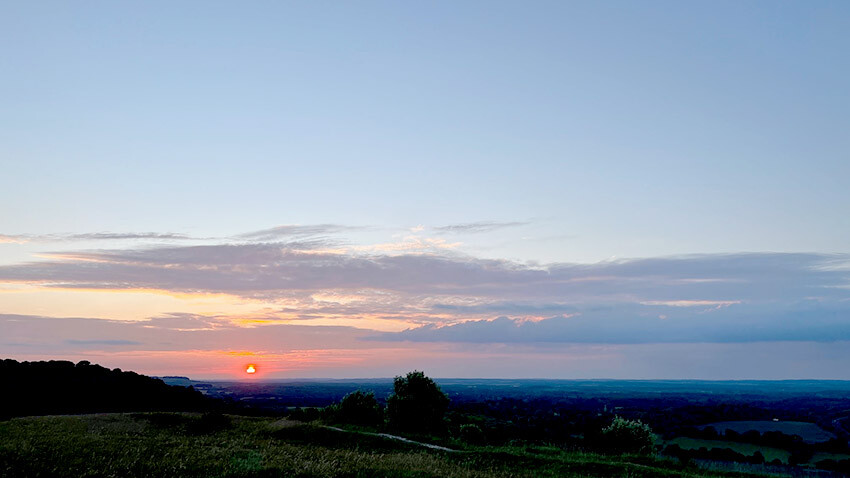
- Christmas
- Community
- Dogs & Horses
- Egypt & Tutankhamun
- Entertaining
- Farm
- Filming
- Gardens
- History & Heritage
- Daily Life
- Royalty
- Cooking
- Interiors
- Heroes
- Architecture
- Cars
- Conservation
- Downton Abbey
- Events
- Gardens & Landscape
- Highclere Castle Gin
- History
- Planes
- Restoration
- Stories & Books
- Uncategorized
- Visitors
- Wildlife

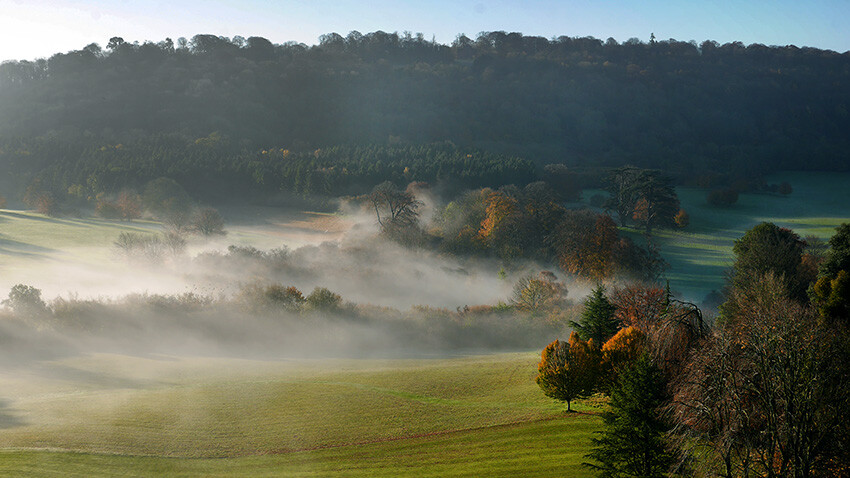

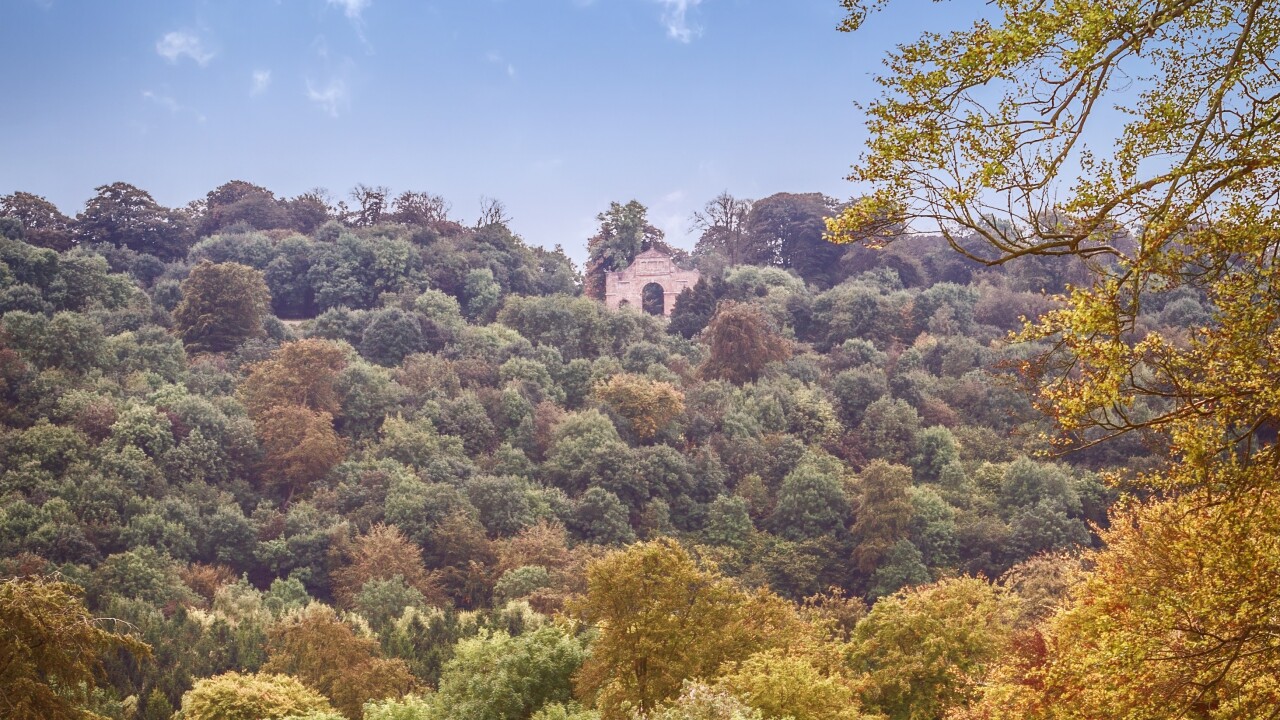
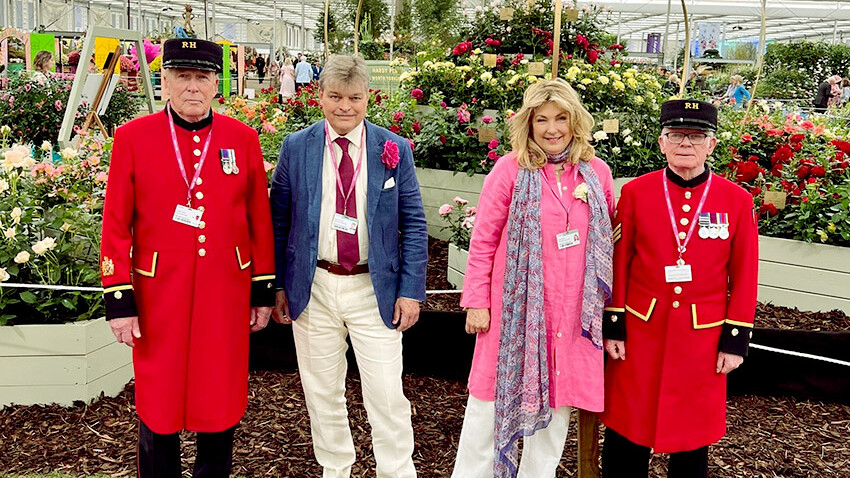
We’re truly looking forward to seeing this beautiful place in person this upcoming July. BMS
Spectacular!